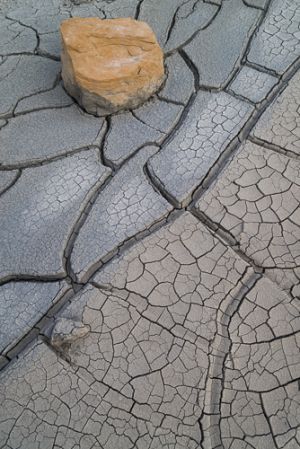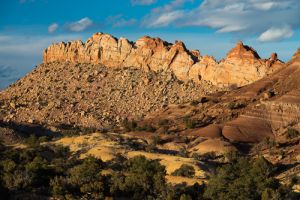A problem facing landscape photographers in the western US is the vastness of the region. It’s often a very long distance from a good location to the nearest lodging. Consequently, most of the nature photographers I know who live here have some sort of self-contained vehicle, so that they can stay on-site.
I just got back from southern Utah, where a group of photography friends got together to spend a week in the remote back country. This was really just a social gathering, but with some very serious photography tossed into the mix. What set this gathering apart, though, was another connection. All of us have four-wheel drive pickup trucks (from Toyota Tacoma to full-sized GMC) with a popup camper mounted in the truck bed. More specifically, we’ve all bought camper models manufactured by a California company: Four Wheel Campers. Yes, this is a plug for their products. I’ve owned a Four Wheel Camper for a number of years now – and am planning to upgrade to a new model this coming spring – and have nothing but good to say about both the campers themselves, and the company. The company definitely understands photographers as Tom Hanagan, the owner of Four Wheel Campers, is a Nikon shooter himself.
The truck camper is my base-camp, my home on the road, my office in the wilderness – with all the creature comforts of stove, refrigerator, furnace, 85-watt solar panel, queen bed, and lots of storage room. The weather can be awful, but I remain dry and warm, able to work on my laptop, cook a meal or make coffee, or read with a glass of wine at hand. And I can set up camp – or break camp and be on the road – in just a few minutes at most.
For specific details, check out their website: www.fourwh.com.
Here are a few photos from my trip.




















